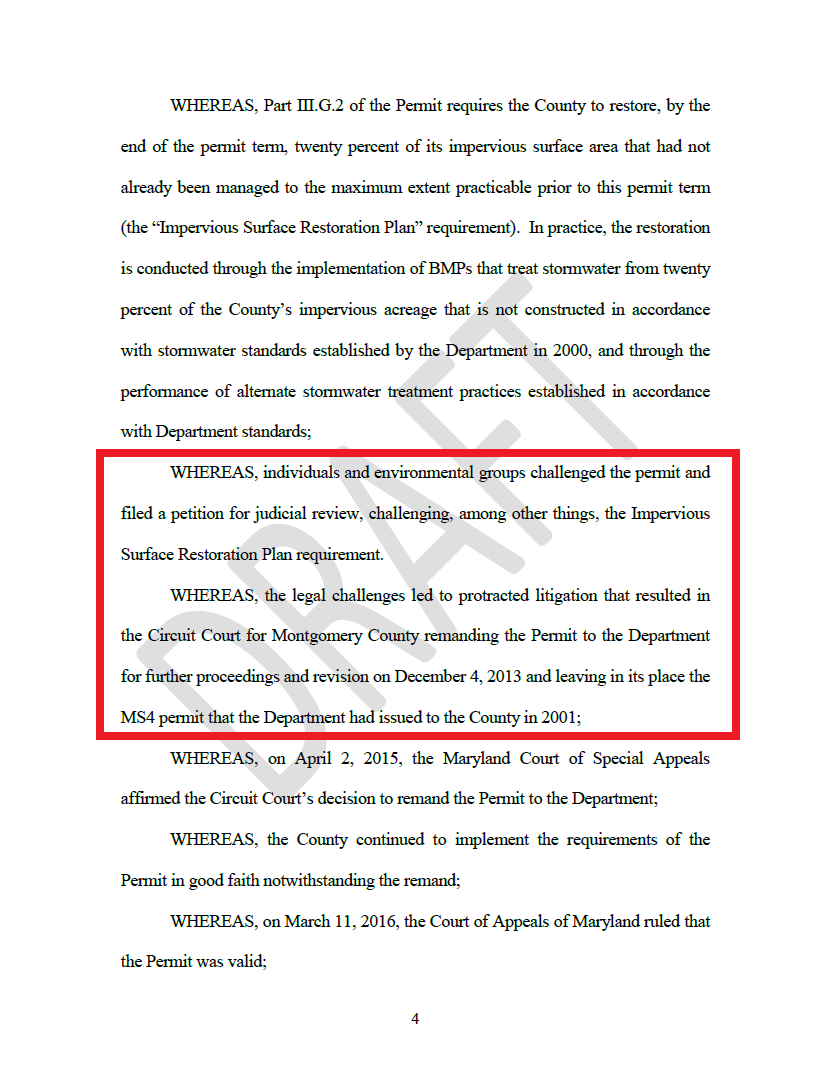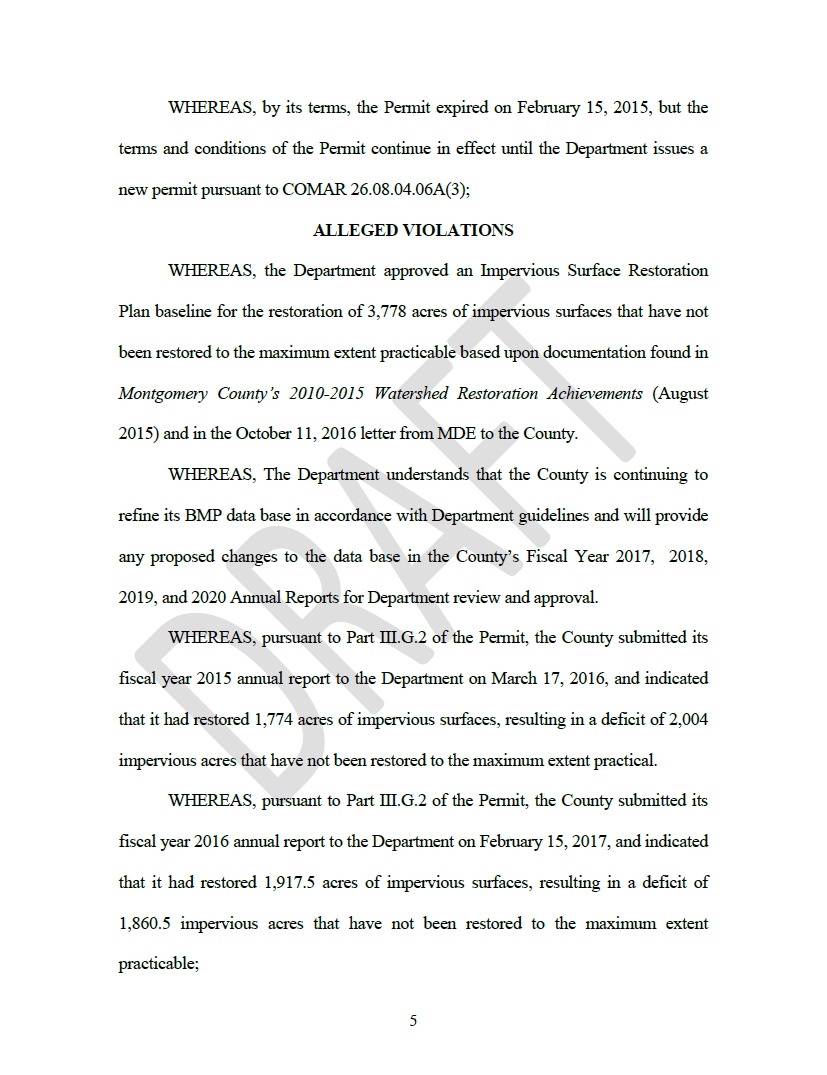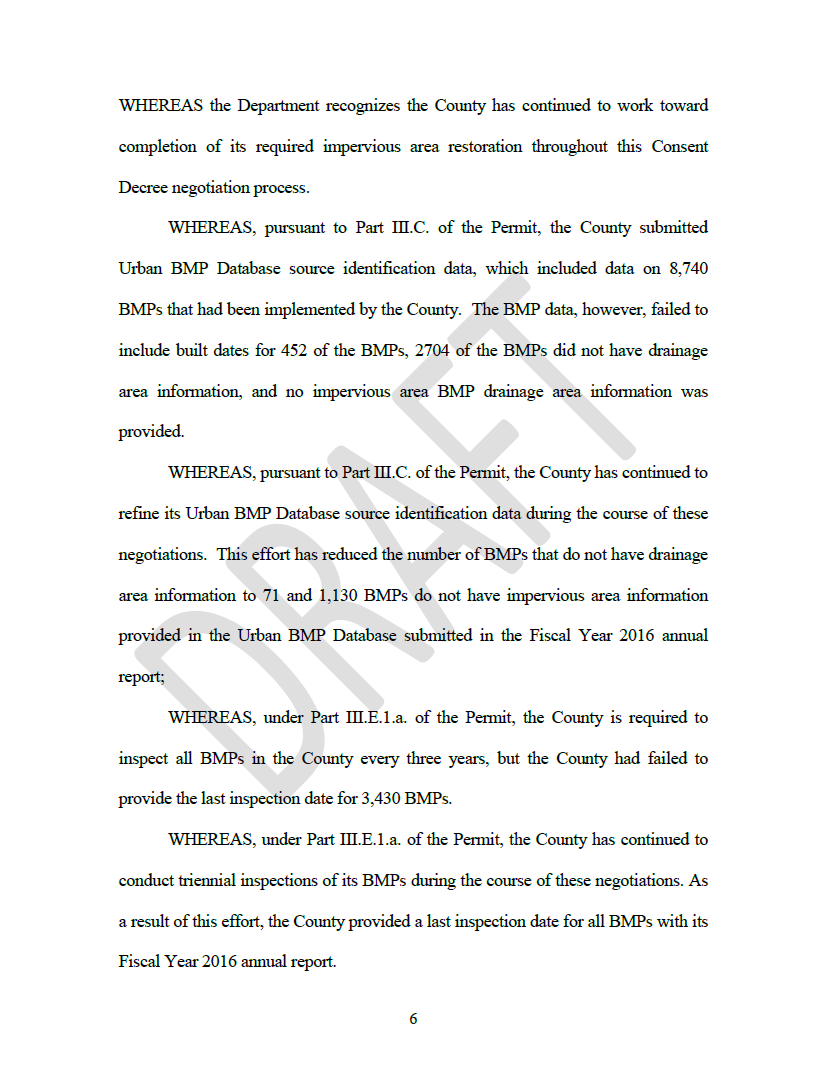By Patrick Lacefield.
Sorry, but Seventh State’s take on the County’s changes in stormwater management was off the mark in some ways – but interestingly enough it was right on the mark in making our case for the change.
First, stormwater management (not the most exciting or high profile issue) has long been a focus of the County Executive, going back to his Council days. He has long had a track record of moving the County toward arduous environmental goals that have made the County a leader in this arena.
Second, the reason he has proposed changes is because the current approach to completing the State-required environmental stormwater management has proven to be inefficient and costly. The design and construction of projects to treat the stormwater was taking several years longer than orignally planned. The contracting approach was not focused on getting maximum performance.
As Seventh State correctly pointed out, costs to taxpayers have increased. The initial fee for this program was approximately $8 per household. It is now over $100 per household; and if we maintain the status quo, it would rise another $10 to $15 per year for the next 3 or 4 years. That is unacceptable.
Third, the County has already restored 5,000 acres of impervious surface under MS4 permits over the last 10 years. This is more acreage than any other jurisdiction in the state of Maryland has accomplished. It is also important to note that the MS4 permit program has never been done before. No jurisdiction in the State, nor even the State itself, has had experience with setting requirements or determining how the requirements would be met. We were the pioneers.
Also, there was no lawsuit or “series of lawsuits” over the County’s consent decree with the State. The County entered into a consent decree with the State because it fell short in meeting the impervious surface restoration piece of the permit. All other requirements of the 2010 permit have been met. The consent decree gives the County until December 31, 2020 to meet the terms. However, it is anticipated that pending State approval, the County will meet the impervious acre restoration requirements of the 2010 permit by the end of this year – well ahead of time.
Again, there is no “privatization” here. All of the stormwater construction work is already being done by private contractors. The County does not build nor maintain stormwater management facilities. We oversee, authorize, and ensure compliance with environmental regulations; and that does not change.
Under our new contracting method, the permittee will always be the County, so the responsibility to ensure the permit requirements will remain with the County. This allows companies that do this work as their primary and only function to assume the risk for costs and completion. It’s called performance-based contracting. DEP can then be left to do what it does best: regulate, monitor and inspect. We are simply removing the layers of contracts that bog down and complicate the work.
County staff will continue their work to develop other MS4 permit requirements including watershed implementation plans and pollution prevention plans; identifying the target areas for the most effective Total Maximum Daily Load reduction location; increasing education and outreach as well as public involvement and participation; maintaining an illicit discharge detection and elimination program; continuing inspections and maintenance of an ever-increasing stormwater management facilities program. That will not change.
Patrick Lacefield is Montgomery County’s Director of Public Information.
Pagnucco’s Response
Patrick Lacefield says we are “off the mark,” but two of his claims are refuted by the draft consent decree itself.
First, he says that there was no lawsuit or “series of lawsuits.” In fact, the consent decree describes prior litigation on page 4, which we reprint below.
Second, he says, “The County entered into a consent decree with the State because it fell short in meeting the impervious surface restoration piece of the permit. All other requirements of the 2010 permit have been met.” But the consent decree lists a host of additional reporting violations on pages 5, 6 and 7 which we reprint below.
Now to the broader point. Perhaps the Executive Branch is right that there is a more cost efficient way to meet its stormwater obligations. In this post, Lacefield calls it “performance-based contracting” whereas the County Executive’s memo calls it a “public-private partnership contracting vehicle” (P3). The Executive correctly points out that Prince George’s County has already entered into a P3, although it might be too new to fully judge its performance. Whatever the exact nature of the Executive’s proposal, maybe it’s worth talking about, especially since – as Lacefield says – the water quality protection charge is forecast to rise by 17% between FY20 and FY23. Let the public discussion begin.




